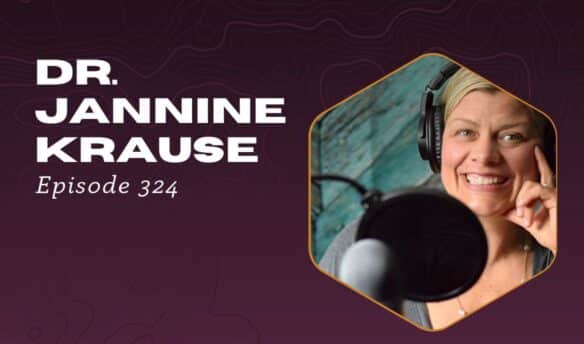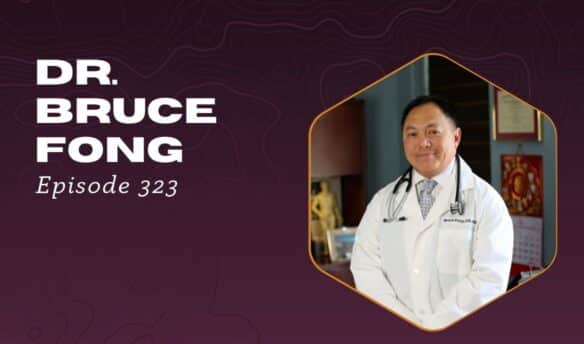If you are not out and about in nature all the time, you might not be getting enough vitamin D. Many people think that if they live in a sunny location, they cannot possibly have a vitamin D deficiency, but that is not the case. Along with the potential of having a genetic mutation that doesn’t allow you to absorb vitamin D from the sun, deficiency could be the missing key to many health issues that you may be experiencing.
What I see in my practice is that about 75 percent of my patients in Washington state have a vitamin D deficiency. There’s also a huge connection with migraines and vitamin D deficiency, along with women who have PMS combined with migraines. I’ve used vitamin D to help with premenstrual migraines in particular. I’ve also noticed that vitamin D deficiencies and magnesium deficiencies go hand in hand.
CLICK HERE TO LISTEN TO MY PODCAST EPISODE DEVOTED TO MAGNESIUM DEFICIENCY.
There is a connection between vitamin D deficiency and chronic mono infection (epstein barr virus) as well. Sometimes the virus doesn’t completely go away and can reactivate itself. It’s not common thought in modern medicine, but I see the effects of chronic reactivated mono infections in my office weekly. Vitamin D is critical for the immune system. If you have recurrent cold sores or herpes symptoms, check your vitamin D levels. Anyone that suspects they have hypothyroidism or other thyroid issues should check their vitamin D levels as well. Almost every person that has a thyroid issue has a vitamin D deficiency.
Vitamin D deficiency has been linked to gut issues such as Irritable Bowel Syndrome and Crohn’s Disease. Vitamin D is fat-soluble, so if you are having issues digesting or absorbing fat, you may be lacking the vitamin.
WHAT VITAMIN D DOES FOR US
Vitamin D is like a booster for your white blood cells. It helps them to work better. There are receptors on pretty much all of our cells for vitamin D and magnesium.
It has been found that if you improve your vitamin D status you can reduce your colon, prostate, or breast cancer rate by 30 to 50 percent. That alone shows us the connection between chronic infections and cancer. In addition, there is a Canadian study that found females that had been exposed to the sun mostly in their teen or young adults years had a 70 percent decreased risk of developing breast cancer. This is why getting kids outside is so important!
You may wonder why vitamin D deficiency is so prevalent now when 20 years ago we didn’t talk about it at all. We are starting to figure out that we can test it, which is becoming more common and thus showing us these deficiencies. But we’re also beginning to notice connections between vitamin D deficiency and certain illnesses. The less exposure to the sun, the greater likelihood you’re going to have risk for certain conditions.
HOW DO WE BECOME VITAMIN D DEFICIENT?
In our modern lives we just don’t get outdoors as much. Working outside is less common than it was a generation ago. The other big component is that we are terrified of getting wrinkles, and we are wearing too much sunscreen. This might seem counter intuitive, because sunscreen is hugely important. But it is also important to go without sunscreen for about 15 minutes each day in order to absorb the optimal amount of vitamin D. Women in particular tend to cover their faces in sunscreen every single day, which could be hampering this absorption. I recommend taking a little time at the end of each day to sit outside for a few minutes and get that sun on your skin!
Digestive system problems can also cause deficiency in vitamin D. Probiotics, the beneficial bacteria in our gut, help us to absorb vitamin D. If you’re not taking probiotics or you’ve had a lot of antibiotics that have killed off all your good gut bugs, you might need probiotics to help you to absorb some Vitamin D.
Another culprit is that a lot of people are still on a low fat diet. They’re afraid of any fat, even good fat such as avocado or nut butters. You need fat healthy to absorb vitamin D, because it is a fat-soluble vitamin. If you are eating a low fat diet and you’re not cooking with oils at all, you are not going to be able to absorb vitamin D sufficiently.
Vitamin D dosages aren’t one size fits all. So if you’re already supplementing vitamin D, consider this: the larger an individual you are, the more Vitamin D you need. The best way to find out exactly how much you need is to through lab testing. Conventional labs can test you for vitamin D using the 25-OH test. There are more advanced profiles to look at the breakdown of your vitamin D, but these tests can be quite expensive. Start with the 25-OH vitamin D test through general labs such as Lab Corp or Quest Diagnostics and see where things are.
Genetic testing is also an option to evaluate whether you absorb vitamin D or not. I think genetic testing is important because it gives you a sense of what you’re working with in terms of your genes compared to what is actually happening in your body. I highly recommend getting genetic testing to know what’s up with your vitamin D levels.You can do this through 23 and Me or any of the other genetic testing companies that are available now.
IN CONCLUSION
The 25-OH testing is critical. You don’t want to begin supplementing a large dose of vitamin D without it. If you’re not interested in getting testing, then start with 2000 IU of vitamin D a day in the summertime, 5000 IU in the winter. These are low doses to start with as a jumping-off point; however, testing is critical because you don’t want to overshoot it. This can be particularly problematic if you’re already out in the sun absorbing that vitamin D and then throwing a supplement on top of that. Genetic testing is also available to you to find out if your body is able to absorb vitamin D from the sun. I cannot stress enough that you should get tested before you start to supplement or go on a sun exposure binge. It’s good to know where you’re at. It is then important to re-test after you’ve supplemented or been exposing your skin to vitamin D so that you can see what is happening. Once you get these levels in your body where they need to be, you will see the benefits. The best time to test your vitamin D levels is in February as this is the lowest sunlight time frame in the North Americas region. I highly recommend keeping tabs on your vitamin D levels yearly as vitamin D can help to prevent cancer, prevent illness as it boosts immune function, regulate hormones, even out moods and stabilize weight.
This blog post is a summary of my podcast on vitamin D. Click here to listen to my podcast!
youtube





